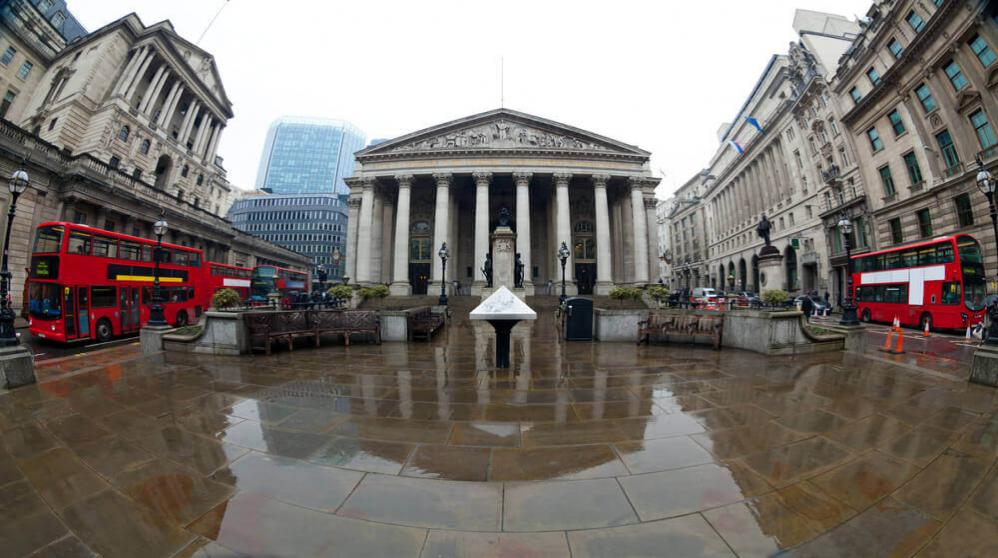
Daily Market Analysis and Forex News
BOE Decision: What you need to know

When is it due?
- The Bank of England’s (BOE) policy statement is due to be released today (Thursday, August 4th) at 11:00 AM GMT
- Half an hour later, BOE Governor Andrew Bailey is due to hold a press conference at 11:30 AM GMT
The BOE is widely expected to raise the UK bank rate by 50 basis points (bps) today.
A 50bps hike today would mark the BOE’s largest hike since 1995.
Markets are currently forecasting an 80% chance that the BOE will trigger a larger-than-usual hike, given that a 50bps move would be double the size of its previous four hikes.
The BOE has been hiking its benchmark rates since the end of last year:
- December: 15bps
- February: 25bps
- March: 25bps
- May: 25bps
- June: 25bps
- August: 50bps?
TOTAL: 165bps? (to be determined after today’s decision)
Why is the BOE in a rush to raise interest rates?
One word: inflation.
The UK consumer price index (CPI), which measures changes in the prices of a basket of goods and services, has risen by 9.4% in June 2022 compared to June 2021.
That’s the highest year-on-year advance for the headline CPI since February 1982!
Given that a central bank’s primary method for cooling inflationary pressures is by raising interest rates, no surprise then that the BOE has sent its bank rate to 1.25% (as of last month), which could go up to 1.75% after today’s decision.
What happens next?
As things stand, markets are forecasting that the BOE can only send its benchmark rate higher by another 125bps to 3% after today's decision (assuming today's hike is indeed 50bps), before having to reverse course and lower rates in Q2 2023.
Thus, it appears that the BOE is already more than halfway done in this ongoing rate hike cycle.
The reason for this about-turn is because the BOE may be concerned about sending the UK economy deep into a recession. Already back in May earlier this year, the central bank warned of the prospects of a UK recession in 2023.
And with inflation set to reach double-digits in Q4 this year (well above the BOE’s 2% target), along with rates moving higher, such a combo could break the UK economy (i.e. a recession).
How would this impact the Pound?
So far this year, the Pound has already weakened by 10% against the US dollar (remember the good ol days of GBPUSD being above 1.30?).

More recently, GBPUSD a.k.a. “cable” hasn’t been able to keep its head above its 50-day simple moving average (SMA).
- If the BOE triggers a smaller-than-expected 25bps hike today, that could result further declines for GBPUSD.
- If the BOE triggers a massive 75bps hike today, that could shock GBPUSD northwards.
- If Governor Bailey can convince markets (and that’s the key part: markets need to believe the BOE's message) that the UK economy can indeed withstand interest rates rising past 3% by Q1 2023, that could also translate into further strength for Sterling.
- If Governor Bailey suggests that the BOE will have to slow down its intended rate hikes, for fear of sending the UK economy into a recession, that could see the Pound move lower.
Expect a combination of the above-listed scenarios.
Key support and resistance levels for GBPUSD
The BOE’s latest policy signals are set to determine whether GBPUSD will be kept above its 50-day SMA, or sent below that key technical indicator.
- Immediate resistance above 50-day SMA at recent cycle peak of 1.22934
- Stronger resistance can be seen around 1.24 (end-April lows/mid-June high)
- Support: 1.200 (psychologically-important level) / 1.19335 mid-June trough
- Stronger support set to arrive at 1.1760 – lowest since the onset of the pandemic
Overall, I expect that GBPUSD may do no better than 1.24 for the immediate term, barring a shockingly-hawkish tone out of the BOE today, and assuming markets can buy into such an aggressive messaging.
In other words, GBPUSD is likely to remain confined to its downtrend (series of lower highs and lower lows) that has persisted since June 2021, given the dark clouds swirling about the UK economic outlook which have lent themselves to a downward bias for “cable”.
Other points to look out for today:
- Details on "Quantitative Tightening"
Today, the BOE is also expected to unveil how it plans to reduce the 895 billion in “easy money” it has pumped out (by selling gilts) into the UK economy since the 2008 global financial crisis.
Such details may impact gilt yields, which have a large influence over Sterling's moves.
- BOE's economic and inflation forecasts
Markets will be eager to find out how high the BOE thinks UK inflation will go, and the central bank's forecasts on the likelihood of a UK recession.
The Pound will be ready to offer an immediate reaction to such economic projections, as they should inform market expectations for how the BOE is able to respond (i.e. how much higher UK rates can go).
Ready to trade with real money?
Open accountChoose your account
Start trading with a leading broker that gives you more.